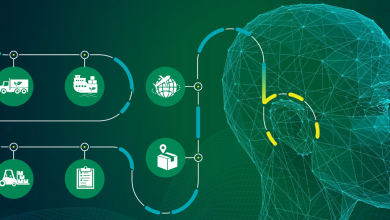As channel firms grow, many back-office systems that manage invoicing and payments can often struggle to operate efficiently and accurately. This is because many businesses are unknowingly using inefficient systems, however these poor invoice and billing practices have a knock-on effect on profitability. Instead, Managed Service Providers (MSPs) and IT resellers can benefit from PSA (Professional Service Automation) tools to enable them to better plan, monitor and implement faster billing cycles for their customers and teams.
Rob Hancock, Giacom emphasises the importance of investing in PSA solutions, as better billing not only enhances productivity and is more cost-effective; but it also frees up staff resources to focus on what’s important: growing the business and bringing in more revenue – but, what is key to consider on this PSA journey?
Convergence Drives Greater Billing Requirements
Some of the major shifts impacting the industry include the convergence of IT and telecoms, where connectivity and voice comes closer together. This affects the requirements of billing systems that are needed to support the channel. These systems must become more sophisticated to support MSPs as they grow in scale to meet customers’ needs.
Today, MSPs need to handle increasingly complex billing processes. More and more, there is a mix of fixed cost licenses and variable cost items to manage – consequently meaning that there is a lot of data to process during billing. To succeed, channel businesses need to be able to bill for both scenarios from the same system accurately; and to provide customers with real-time visibility on their in-month usage. This way invoices can be clearly understood when delivered to clients, with no unwanted surprises.
MSPs also need their billing systems to provide transparency and a single view of their customers. This is often the reseller’s primary source of the quantity of SaaS or software licences that might have been sold to each of their customers, among other items. So, it’s important that the correct inventory and costs are attributed to each of their customers. Not only for their own visibility, but also to build their confidence that they are being billed correctly and getting value from their investments.
Investing in Professional Service Automation
Billing shouldn’t be a challenge for MSPs and their employees to manage. Equally, associated systems should be easy for customers to access and understand too. Despite recent developments in cloud accounting solutions and technology platforms, many organisations continue to use Excel-based systems for manual billing. However, this approach is mostly dated and inefficient – especially when you consider that it is possible to issue customers a single, accurate, almost-completely-automated monthly bill.
Instead, by introducing modern PSA (Professional Service Automation) software into the mix, profitability can be enhanced for MSPs, along with greater customer satisfaction and retention, simply by streamlining and simplifying the billing process. Today, these sophisticated systems should be able to manage invoices from multiple vendors in different formats, and assign the correct costs to each of their customers – and enable invoicing to be automated, so that it is not a heavy burden on the business. Moreover, replacing manual data entry with automated processes enables MSPs and their customers to gain greater real-time insights into their bills, increasing transparency. So every cost can be correctly reviewed and justified.
Additionally, managing licencing is often a frustrating task for MSPs when it comes to billing. This is because customer licence information changes as the client’s business changes. For example, an MSP might add new users and software, or remove people when they come off the company’s payroll. The management of these elements is fine-grained and has to be kept on top of. But, a PSA tool can bring all of these areas together so the end-customer ends up with a clearer bill; and so that the MSP ends up with fewer functions to manage, via a single point of interaction between its different systems, ultimately improving the efficiency of these processes. This was reflected in statistics by Autotask (2019), which found that investing in a PSA helps to reduce customer dissatisfaction by 48%, and can increase response times by 28%, enabling companies to take more efficient routes, while enhancing customer satisfaction.
Automating Not Just Your Billing
In many respects, a PSA acts as a Customer Relationship Management (CRM) tool too. It provides a ticketing system to manage technical processes and acts as a whole business process model for MSPs to benefit from, automating complex multifaceted business processes. Further, PSA is all about improving the visibility of each project, for each customer and cutting the bureaucratic burden that accompanies many laborious manual processes. In short, by using a PSA today, MSPs can improve the management of their accounts in such a smart way that it allows their employees and customers to make more intelligent decisions about their operations. To illustrate this point, the role of PSA was highlighted in the Datto 2020 State of the MSP report as one of the most valuable tools that positively impacts MSP businesses.
Therefore, it’s not just billing that is well managed. Any additional licence upgrades, downgrades and deletions made in the MSPs portal can be matched against the PSA system. Depending on the size of the business, this can dramatically cut the time spent managing and monitoring software licences. Just as importantly, it ensures the customer is not leaking revenue and profit for using unnecessary licenses.
The PSA marketplace is quite crowded too. So when MSPs choose one, they need to select a tool that is right for their business. Today, it’s important to consider the PSA’s flexibility, integrations with current software packages, security processes and if they offer implementation support. For smaller companies, the price will be a major factor, so it’s worth weighing up how effective the gains will be in comparison to its overall cost, as well as whether they will out-grow a particular software solution. Partnering with a well-known PSA tool like Autotask or ConnectWise will enable integration with multiple systems to increase business efficiency – also as firms scale, they’re capable of supporting growth too.
Responding to Changing Billing Environments
Another key transition in the market to consider is the maturity of SaaS pricing models. Traditionally, SaaS would be priced per user, per month. Whilst there were some complexities to this, the pricing was easy to understand, either input into systems or via formulas in spreadsheets to manage costs and produce invoices. With new portals and invoicing models entering the market, such as Microsoft’s New Commerce Experience, this will change the way MSPs have to provision and bill clients for software licenses.
With this new model, an MSP will have to balance the cost benefits of different licence lengths against the flexibility their clients’ need to increase or decrease the volume of software licences demanded in real-time. Therefore, the capabilities of supporting billing systems must change to facilitate this trend. Therefore, it’s important to work with PSAs that are prepared for this kind of change.
APIs Enable Effective PSA Integration Between CSPs and MSPs
For Cloud Service Providers (CSPs), meeting MSPs’ needs means adapting to the ever-changing business and tech environment. They’ll be attentive to customers’ needs and help deploy the right PSA solution, that supports MSPs as they grow from being an SMB themselves, to becoming mid-market or enterprise sized.
Creating a solid MSP-CSP partnership with the support of PSA means resellers can manage a single bill, broken down by customers, with the details of all the services they have paid for. When dealing directly with cloud distributors, MSPs can also integrate their PSA with the CSPs Application Programming Interface (APIs), so any discrepancies can be easily identified in licence counts between the platforms. This helps free the MSP from the monthly management and manual processing of invoices too, so they can focus on client care instead.
Conclusion
Professional Service Automation has the power to drive profitable change for MSPs and their customers. By integrating this software with their own billing systems, they can accurately and effectively improve the laborious challenge of software and hardware inventory management, along with the associated problem of providing accurate invoicing to customers for technology and services purchased.
But, selecting the right tool here is important. Channel businesses must work with their CSPs to select best-of-breed billing solutions that offer the ability to scale as they grow. Further, replacing spreadsheets with dated invoicing systems will not only make it possible to increase internal productivity; but the data insights created via PSA and its ability to automate billing will enable channel firms and customers to make better joint decisions. This approach will ultimately lead to better, more trustworthy customer relationships between MSPs and their customers – and eventually, over time, greater MSP profitability




